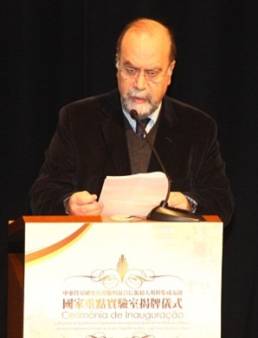In the modern age, the world has evolved based on technology development, achieved in 3 Industrial Revolutions throughout time, the 1st initiated with the Steam Engine (1763), followed by the 2nd started with the inventions of Electrical Power Generation (1831) and the Combustion Engine (1864), until the 3rd kicked-off with the discovery of the Transistor (1947) that really marked the commencement of the Information Technology revolution or what is now known as the Age of Information, led by continuous and fast developments in Electronics, Computing and Telecommunications. Which define the pace of the current planetary globalization where communications are made at the speed of light.
In 1992, the graduate programs in electrical and computer engineering were launched, at Master and Ph.D. levels, with specialization in state-of-the-art Microelectronics. Until now, microelectronics’ research at the University of Macau led already to the graduation of close to 200 Masters and 12 Doctors, mostly local students, that achieved world-level scientific results, including 8 articles (chips) in the world top conference in Microelectronics, the International Solid-State Circuits Conference (ISSCC), held annually in San Francisco, USA
As a consequence of its past outstanding results, the Analog and Mixed-Signal VLSI Laboratory, created in 2003, was elevated by the Ministry of Science and Technology – MoST of China to the important national status of State Key Laboratory. In 25 January 2011, Dr. Chui Sai On, Chief Executive of the Macao Special Administrative Region, and Dr. Jian-Lin CAO, Vice-Minister of Science and Technology of China, et al. officially inaugurated the State Key Laboratory of Analog and Mixed-Signal VLSI at University of Macau. Then, after the initial phase of development where the main human and technical infrastructures of the laboratory were set-up and positively assessed after 3 years by the MoST, we’ve entered a new phase on development in 2014 where further consolidation and integration of the research lines must be achieved, already in a new world-class facility in the new UM campus, in Hengqin. Our dimensions, in terms of human and space resources are still of a small scale, but the work developed is of extremely high quality, with world-top level results, and we’ve the ambition to contribute further, with great determination and hard work, for the development of state-of-the-art electronics in China.
Rui Martins


